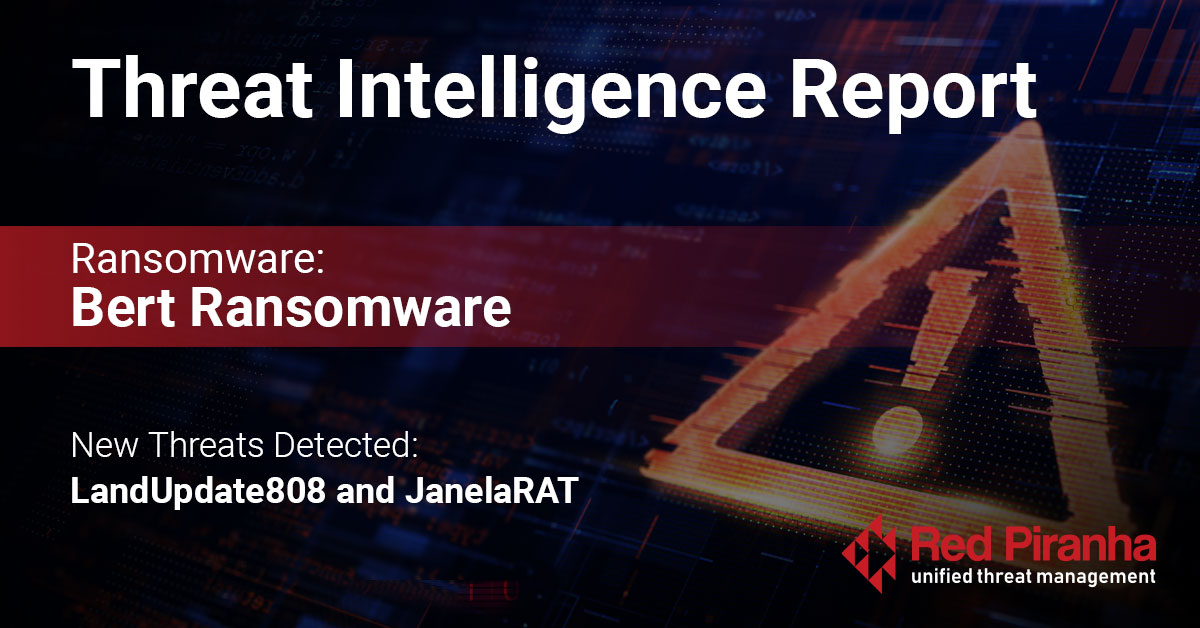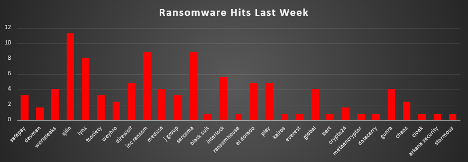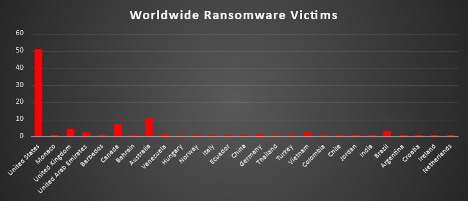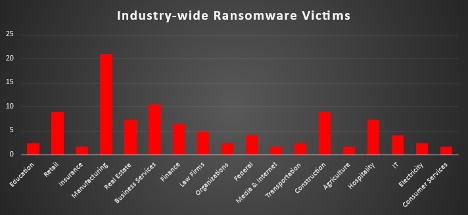
| New Threat Detection Added | 2 |
| • LandUpdate808 • JanelaRAT |
|
| New Threat Protections | 130 |
Weekly Detected Threats
The following threats were added to Crystal Eye this week:
|
Threat name:
|
LandUpdate808 | ||||||||||||||||||
|
LandUpdate808 is an exploit kit to make use of the ClickFix technique. The ClickFix technique tricks a user into thinking that their browsers aren’t up to update, or they are running a vulnerable version that can be hacked and to fix it all the user has to do is copy the command given and paste it into PowerShell. This usually leads to a dropper being installed/executed that can deploy any number of malware and create a C2 backdoor on the system.
The exploit kit makes it easier for threat actors to deploy web pages utilising the ClickFix technique. It does this by imitating a browser update, and instead of copying a PowerShell command it gets the user to download the malicious payload directly from the website.
|
|||||||||||||||||||
|
Threat Protected:
|
02 | ||||||||||||||||||
|
Rule Set Type:
|
|
||||||||||||||||||
|
Class Type:
|
Malware | ||||||||||||||||||
|
Kill Chain:
|
|
||||||||||||||||||
|
Threat name:
|
JanelaRAT | ||||||||||||||||||||||||||||||||||||
|
JanelaRat was first seen in June of 2023 and is expected to have originated from a Portuguese speaking country. JanelaRat appears to be targeting Banking and Financial institutions in Latin American areas. The threat actor distributes the malware via ZIP archives. These archives contain a heavily modified VBScript from a different malware called BX RAT. Once the VBScript is executed, it does two things; it downloads and extracts another ZIP Archive from the attacker-controlled server. This new archive contains the main payload in .dll format and a legit file called vmnat.exe. The initial VBScript also contained a .bat file that persistently runs the vmnat.exe which side loads the .dll payload, this is the whole infection chain. The user’s system is now under control from this Remote Access Trojan.
The malware does contain several defence mechanisms to protect itself from reverse engineering and detection, such as string encryption, and it goes idle if it’s inactive to avoid being picked up for the network
|
|||||||||||||||||||||||||||||||||||||
|
Threat Protected:
|
03 | ||||||||||||||||||||||||||||||||||||
|
Rule Set Type:
|
|
||||||||||||||||||||||||||||||||||||
|
Class Type:
|
Trojan-activity | ||||||||||||||||||||||||||||||||||||
|
Kill Chain:
|
|
||||||||||||||||||||||||||||||||||||
Known Exploited Vulnerabilities (Week 1 - June 2025)
For more information, please visit the Red Piranha Forum:
https://forum.redpiranha.net/t/known-exploited-vulnerabilities-catalog-2nd-week-of-june-2025/567
|
Vulnerability
|
CVSS
|
Description |
|
CVE-2025-5419
|
8.8
(Critical)
|
Google Chromium V8 contains an out-of-bounds read and write vulnerability that could allow a remote attacker to potentially exploit heap corruption via a crafted HTML page.
|
|
CVE-2025-21479 /CVE-2025-21480
|
8.6 (High)
|
Multiple Qualcomm chipsets contain an incorrect authorisation vulnerability. This vulnerability allows for memory corruption due to unauthorised command execution in GPU micronode while executing specific sequence of commands.
|
|
CVE-2025-27038
|
7.5 (High)
|
Multiple Qualcomm chipsets contain a use-after-free vulnerability. This vulnerability allows for memory corruption while rendering graphics using Adreno GPU drivers in Chrome.
|
|
CVE-2021-32030
|
9.8 (Critical)
|
ASUS Lyra Mini and ASUS GT-AC2900 devices contain an improper authentication vulnerability that allows an attacker to gain unauthorised access to the administrative interface. The impacted products could be end-of-life and/or end-of-service.
|
|
CVE-2025-3935
|
8.1 (High)
|
ConnectWise ScreenConnect contains an improper authentication vulnerability. This vulnerability could allow a ViewState code injection attack, which could allow remote code execution if machine keys are compromised.
|
|
CVE-2025-35939
|
5.3 (Medium)
|
Craft CMS contains an external control of assumed-immutable web parameter vulnerability. This vulnerability could allow an unauthenticated client to introduce arbitrary values, such as PHP code, to a known local file location on the server.
|
|
CVE-2024-56145
|
9.3 (Critical)
|
Craft CMS contains a code injection vulnerability. Users with affected versions are vulnerable to remote code execution if their php.ini configuration has register_argc_argv enabled.
|
|
CVE-2023-39780
|
8.8 (High)
|
ASUS RT-AX55 devices contain an OS command injection vulnerability that could allow a remote, authenticated attacker to execute arbitrary commands
|
Updated Malware Signatures (Week 1 - June 2025)
|
Threat
|
Description
|
|
|
XWorm
|
A Remote Access Trojan (RAT) and malware loader that's commonly used in cyberattacks to give attackers full remote control over a victim's system. It's part of a growing trend of commercialised malware sold or rented on dark web forums, often under the guise of a “legitimate tool.”
|
| Ransomware Report | |
|
The Red Piranha Team conducts ongoing surveillance of the dark web and other channels to identify global organisations impacted by ransomware attacks. In the past week, our monitoring revealed multiple ransomware incidents across diverse threat groups, underscoring the persistent and widespread nature of these cyber risks. Presented below is a detailed breakdown of ransomware group activities during this period. Ransomware Hits Last Week Qilin dominates this week's ransomware activity with 11.29% of total reported attacks. Its consistent appearance in top-tier rankings suggests operational maturity and sustained international reach, possibly driven by advanced tooling or active affiliate engagement. Inc Ransom and Sarcoma follow closely, each accounting for 8.87% of attacks. Their parallel rise could indicate coordinated campaigns or targeted attacks within specific industries or regions. Lynx registered 8.06%, reinforcing its status as a growing mid-tier threat actor with a notable victim footprint. Meanwhile, Interlock posted 5.65%, continuing its trend of aggressive operations, often linked to data leak extortion. Groups like DireWolf, El Dorado, and Play each contributed 4.84%, suggesting broad targeting across multiple sectors. WorldLeaks, Gunra, Medusa, and Global also appeared prominently at 4.03%, reflecting either opportunistic exploitation or scaled ransomware-as-a-service deployments. Fsociety, J Group, and SafePay all recorded 3.23%, with Weyhro and Chaos at 2.42%, marking them as active but lower-volume operators this week. A collection of groups—including Devman, Crypto24, BlackSuit, RansomHouse, Kairos, Everest, Bert, MetaEncryptor, Datacarry, Cloak, Arkana Security, and Stormous—each accounted for 0.81% of reported attacks. This reflects the fragmented and persistent nature of the ransomware ecosystem, where numerous actors operate below the radar but continue to pose substantial risks across industries. |

Bert Ransomware
Bert is a double-extortion “Data Broker” ransomware family first observed in April 2025: after breaching a Windows host it encrypts data, appends “.encryptedbybert” (or a six-hex variant) to each filename, and plants a ransom note named “.note.txt” that directs victims to negotiate over the privacy-centric Session messenger. The note also threatens to release exfiltrated files on Bert’s Tor leak portal. Technical analyses show the malware uses native Win32 APIs, adds HKLM Run keys for persistence, injects into benign processes, timestomps PE headers to 2007, deletes Volume Shadow Copies, and employs ChaCha20 + Curve25519 for encryption. Initial access in early campaigns has come from phishing e-mails and at least one trojanised software-update distribution, underscoring Bert’s blend of low-friction delivery and aggressive data-leak extortion
TTP Summary
- Initial Access: phishing attachments/links and credential misuse remain the only publicly documented vectors.
- Execution & Persistence: binaries execute via native Win32 APIs or GLIBC calls and install Run-key/Startup entries that survive Safe-Mode boots.
- Privilege Escalation/Defence Evasion: process-injection into explorer.exe/WerFault.exe, timestomping, obfuscated strings, and path masquerading observed in JoeSandbox runs.
- Discovery & Collection: enumerates drives, mapped shares, and browser artefacts before staging data for exfil.
- C2 & Impact: encrypts with ChaCha20 + Curve25519 and communicates with Tor (.onion) services for negotiation.
TTP Chart
|
Tactic
|
Technique ID
|
Technique Name
|
Key Details / Sources
|
|
Initial Access
|
T1566
|
Phishing (malicious attachment)
|
ransom-note guidance & campaign lure
|
|
Execution
|
T1106
|
Native API
|
PE & ELF samples call Win32/glibc APIs directly
|
|
Persistence
|
T1547.001
|
Run Keys / Startup Folder
|
registry or .desktop AutoStart entries
|
|
Persistence
|
T1574
|
Hijack Execution Flow
|
service-replace variant in Windows build
|
|
Priv-Esc
|
T1055
|
Process Injection
|
reflective-load into svchost/systemd children
|
|
Defence Evasion
|
T1027
|
Obfuscated/Encrypted Code
|
PE resources & XOR-encoded strings
|
|
Defence Evasion
|
T1070.006
|
Timestomping
|
file dates reset to 2007-01-01 in samples
|
|
Discovery
|
T1083
|
File & Directory Discovery
|
scans mapped drives before encryption
|
|
Collection
|
T1074
|
Data Staged
|
temp archive before exfil
|
|
C2
|
T1071.001
|
Web Protocol (Tor)
|
traffic to leak site & negotiation onion
|
|
Impact
|
T1486
|
Data Encrypted for Impact
|
ChaCha20/ECC scheme
|
|
Impact
|
T1490
|
Shadow Copy Deletion
|
vssadmin delete shadows strings present
|
IOC
# MD5s
# IPs
# Domains / URLs
# Onion services
Leak Site
bertblogsoqmm4ow7nqyh5ik7etsmefdbf25stauecytvwy7tkgizhad.onion
Negotiation Site
File Server
Session ID: 05149ef8a65c342bc76bad335ad3a314ec1321b18cdb6092667083b4e56a4dcb42
Mitigation (Guidance with subtle CE 5.0 context)
- Block Tor & Onion Domains: Add all BERT onion addresses and Tor relay 185.100.157.74 to DNS / web-proxy deny lists. CE 5.0’s Advanced Firewall lets administrators create object-based rules tied to these indicators without touching core routing tables.
- Registry & Safe-Boot Monitoring: Detect unexpected HKLM\…\Run keys or Safe-Mode boots—early signs of BERT’s persistence. CE 5.0’s Intrusion Protection & Detection profile can be bound to the workstation VLAN to raise SOC tickets automatically when such events occur.
- Driver & Script Control: Enforce Microsoft’s vulnerable-driver block list and Attack-Surface-Reduction rules. Where CE is deployed as a gateway, its Network Detection & Response module surfaces BYOVD or process-injection traffic anomalies before encryption starts.
- Immutable Backups & Segmentation: Keep offline/WORM snapshots and separate backup networks; CE’s interface zoning and VLAN support make micro-segmentation straightforward.
- Endpoint Integration: Pair CE with Microsoft Defender for Endpoint to stream ransomware telemetry into the same dashboard, improving mean-time-to-detect without extra consoles.
- Threat-Hunt & Incident Response: Use CE’s built-in Threat Hunt Dashboard for continuous correlation and enable the Incident Response Services plug-in so that critical BERT alerts auto-escalate to Red Piranha’s SOC for 24×7 containment. See here for details.
- Unified Platform Advantage: Because CE 5.0 delivers firewall, IDPS, NDR, DLP and MDR in one appliance, defenders avoid the integration gaps BERT exploits—while keeping licensing overhead low.cyberdefensemagazine.com
Ransomware Victims Worldwide
The United States continues to dominate the global ransomware landscape, accounting for 50.81% of all reported victims this week. Its expansive digital ecosystem, critical infrastructure, and deep enterprise networks make it a primary target for ransomware actors.
Australia emerges as a significant second with 10.48%, reflecting heightened threat actor attention on the Asia-Pacific region—likely due to its growing role in global tech and finance sectors.
Canada reports 7.26%, showing persistent threat activity against North American enterprises. The United Kingdom follows at 4.84%, with continued targeting of financial, legal, and service-based organisations.
Countries like Brazil (3.23%), United Arab Emirates, and Vietnam (2.42% each) represent active zones of exploitation, often tied to strategic industries or emerging markets.
A wide array of nations—including Germany, Venezuela (1.61% each), and Monaco, Barbados, Bahrain, Hungary, Norway, Italy, Ecuador, China, Thailand, Turkey, Colombia, Chile, Jordan, India, Argentina, Croatia, Ireland, and Netherlands (0.81% each)—illustrate the global distribution of ransomware threats. This “long-tail” of impacted countries reinforces the notion that ransomware is a worldwide risk, indiscriminately targeting vulnerable entities regardless of geography.

Industry-wide Ransomware Victims
Manufacturing remains the most heavily impacted sector this week, accounting for 20.97% of reported ransomware incidents. Its large operational surface, reliance on legacy systems, and critical role in supply chains make it a persistent target.
Business Services follows with 10.48%, highlighting the vulnerability of consultancy, logistics, and outsourced IT sectors often serving multiple high-value clients. Both Retail and Construction reported 8.87%, indicating continued targeting of sectors with distributed endpoints, seasonal workflows, and high transaction volume.
Real Estate and Hospitality each saw 7.26% of incidents, reflecting threat actors' interest in sectors rich with personal and financial data but often lacking mature cybersecurity defences.
Finance registered 6.45%, driven by its high-value digital assets and regulatory pressures. Meanwhile, Law Firms saw 4.84%, consistent with ongoing interest in sensitive legal data.
Federal and IT sectors reported 4.03% each, underscoring the risk to public sector agencies and digital infrastructure providers.
Sectors such as Education, Organisations, Transportation, and Electricity each accounted for 2.42%, suggesting moderate but noteworthy threat activity.
Smaller shares were observed in Insurance, Media & Internet, Agriculture, and Consumer Services (all at 1.61%), demonstrating the ransomware ecosystem’s broad reach across nearly every industry.

